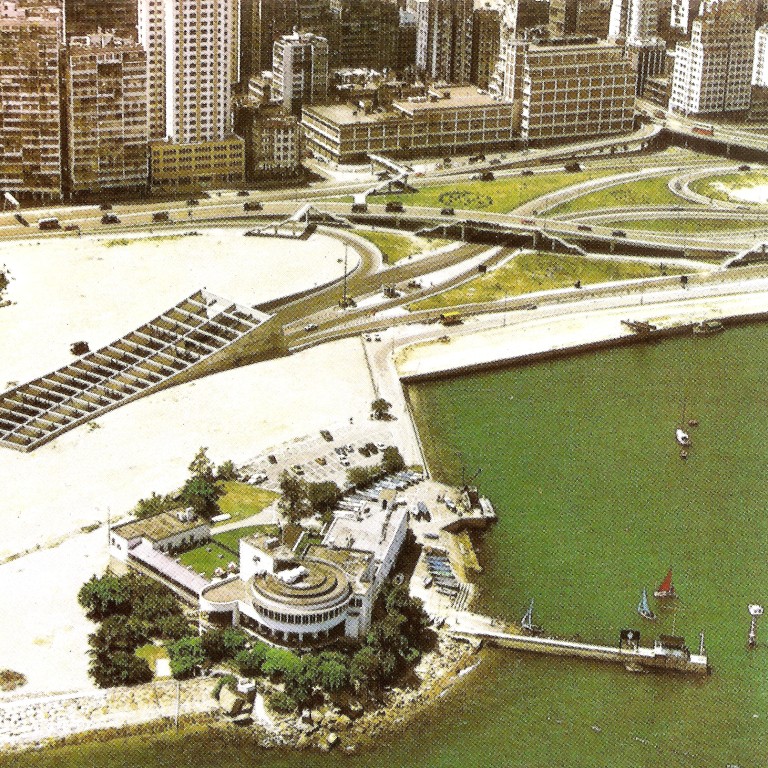
Hong Kong teacher who shares his passion for the past
Jacky Yu Chun-yu, who set up a website to show pictures of old Hong Kong, says it's taught him a lot about city's history and today's youngsters can learn from it too
Jacky Yu Chun-yu grew up reading his parents’ history books and he loved dipping into the Reader’s Digest series. Now a secondary school teacher, Yu credits those books with inspiring his passion for the past – particularly that of Hong Kong.
He began collecting old photographs and postcards of the city in 2007 and today runs the website oldhkphoto.com that showcases old and rare images of the city. “They record the past, but they are also artistically taken. The colonial buildings have a European style,” Yu says. “Discovering them has been an adventure.”

But Yu says it’s almost impossible for a hobbyist to get their hands on affordable old photos – most of the supply from shops on Hollywood Road and Cat Street were snapped up by tourists years ago. Although some can still be found on eBay or curio shops, they can cost more than HK$10,000. That’s far beyond the amount he’s prepared to spend.
To keep visitors returning to his Facebook page, Yu needs a supply of pictures they haven’t seen online before; so he invites the public to submit their own photographs or scanned images of old postcards. The collection has inspired him to write two books: the first, Coastline of Hong Kong, was published last year, and Coastline of the Kowloon Peninsula, was released last month.

“Originally, I wanted to publish a book focusing on Central, Wan Chai and Causeway Bay because most of my old pictures were from these districts,” Yu says. “But the publisher suggested writing about the whole of Hong Kong Island.”
Among its pages Yu included an infographic showing how reclamation work over the decades has changed the shape and size of Victoria Harbour. Not many people know that the Star Ferry Pier has moved four times, he says.
In the past, people had collective memories of events, but now they only focus on the present
In 1890, the pier straddled Pedder Street and Chater Road, in 1912 it was moved to where Jardine House is now located, before being moved in 1957 to Edinburgh Place. The decision to demolish that 49-year-old landmark and build a new pier about 300 metres away led to protests in 2006 led by residents keen to preserve a symbol of the city’s “collective memory”.
Yu’s second book on old Kowloon was harder to put together because his images were mostly of Tsim Sha Tsui. Fortunately, fans of his website came to his rescue and contributed photos from their own collections. Between them, they managed to cover areas such as Hung Hom, To Kwa Wan and Kwun Tong as well as Lai Chi Kok and parts of the western shore.

“West Kowloon only got developed because of the new airport and the construction of the Airport Express. But in these areas you see luxury developments where you pay HK$10 million for a 300 sq ft flat, and the malls are full of luxury brands; locals don’t even eat there.”
Beyond the nostalgic appeal of collecting old photographs, Yu reckons he has learned a lot about Hong Kong history through his hobby, and argues residents should familiarise themselves with how the city has developed over the years.
That perspective informs how he presents his website and the monthly talks that he gives. Yu hopes by understanding their history, Hongkongers can develop a stronger sense of what the city is going through today.

“In the past, people had collective memories of events, but now they only focus on the present. We should be using history to understand developments that are happening today. For example, during the Occupy movement people were demanding democracy, but if you look back in history, that [call] started back in 1949. The road is long and not new.”
Having historical knowledge, he adds, allows us to take a more rational view.
“Some people like to take out the colonial flag, but life under colonial rule wasn’t that good. When people have discussions about society, it can be emotional, but if you have the evidence of history then your argument can be more persuasive.”

